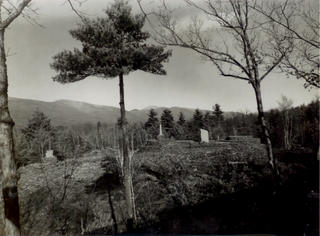She met a handsome young sculptor at a party, their paths crossed at another one, and one night he suggested that they go and see his place in the moonlight. This would have been around 1943.
As incredible as is Harvey Fite's accomplishment of forty years, it's equally staggering to consider how much had been done in the first five years. The center ramp and the central pedestals finished. "Flame" and "Tomorrow" carved and in place.

And all of it in the center of this 6-acre expanse of rubble, this huge abandoned quarry.
Did Harvey plan Opus 40 in advance? No, it grew organically from pedestals rising out of rubble, to a network of ramps and terraces, to a vast sculpture. But the sea of stone was there, surrounding this new work of nascent majesty, and Barbara could sense the mission of the young sculptor beside her. As she was to relate years later, the only thing she could think as she stood on that balcony, in that moonlight, was There'll never be room in this man's life for me.
And I've always imagined Harvey standing next to her, thinking, I'll never be able to get this beautiful, elegant woman to come and share my rough and ready life.
They were married not long after, and Barbara and her two boys moved into the house with rudimentary electricity and no indoor plumbing, and they began a life together.
No comments:
Post a Comment